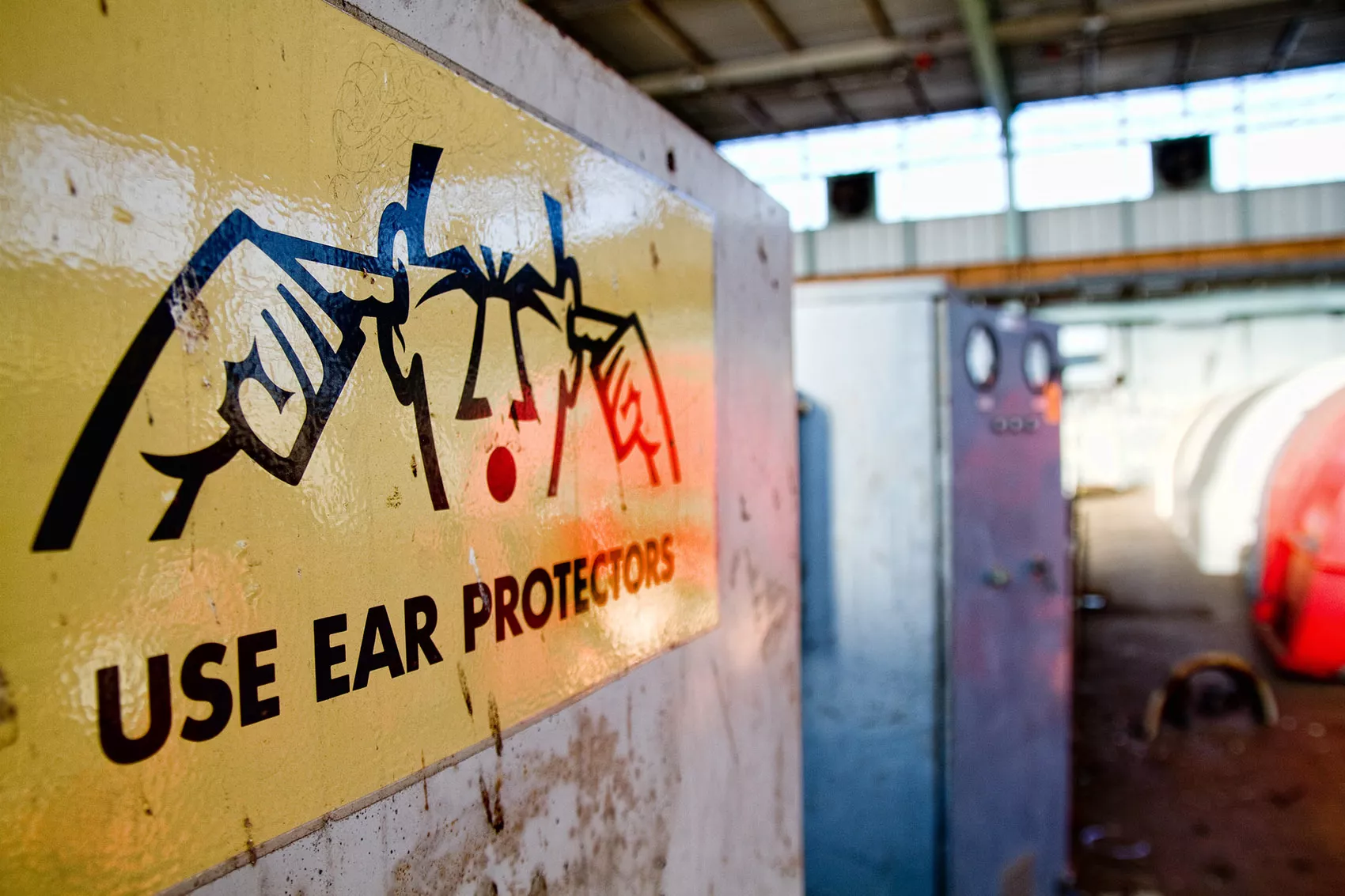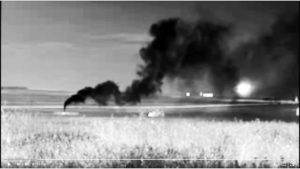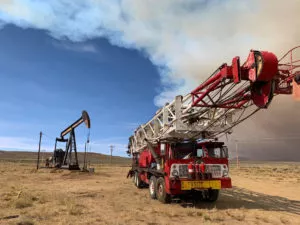One of the most common complaints of residents living near oil and gas operations is noise, which can result from a range of activities and equipment, such as truck traffic, well pumps and compressors, drilling and fracturing, and flaring and venting.
The expansion of oil and gas infrastructure has greatly added to the problem, since compressor stations, processing plants, and pipeline facilities are large sources of noise that can be in operation day and night for extended periods of time.
Changes in the level and type of noise may be particularly noticeable in rural or suburban areas, where residents are accustomed to quiet or only a few familiar and intermittent sources of noise. In many situations, noise from oil and gas operations can make people feel as if they are living in an industrial zone. Fluctuations in noise levels can be particularly difficult to adjust to.
Noise and health
There is scientific evidence that noise can have negative health impacts. A comprehensive review of all available data and measurements of noise levels at oil and gas operations compared the information to various health-based standards, such as those from the World Health Organization. The researchers concluded that modern oil and gas development can cause noise at levels that increase both short- and long-term health risks, including stress, sleep disturbance and deprivation, elevated blood pressure, and heart disease.
Noise has also been documented to have negative physiological and reproductive effects on birds and other wildlife and interfere with their ability to communicate. It may even cause their temporary or permanent displacement from particular areas; if nests and dens are abandoned, populations could decline.
Many municipalities, counties, and states have established ordinances to limit noise considered to be a nuisance to residents. Oil and gas operators should be held accountable for respecting these ordinances and not causing “nuisances” prohibited by local or state laws.
Such standards may be based on maximum levels or averages over a period of time (i.e., in decibels, or dBA); vary depending on whether the activity is indoors or outdoors; and have such goals as minimizing neighborhood disturbance or preventing adverse health effects.
Noise levels
Noise is included in the Clean Air Act and defined by the US Environmental Protection Agency (EPA) as a form of pollution. Noise is also regulated on the federal level as an occupational health and safety issue.
In 1974, EPA established a protective noise guideline of 70 dBA, averaged over a 24-hour period, to prevent measurable hearing loss. However, EPA recommends a noise level limit of 55 dBA outdoors protect against interference with speech and sleep; this standard has been adopted by other agencies, including the Federal Energy Regulatory Commission for interstate pipelines and associated compressor stations. Similarly, the World Bank recommends a maximum nighttime noise level of 55 dBA for residential, educational, and institutional areas.
However, oil and gas operations frequently exceed these standards:
- Researchers in Colorado found that noise levels at oil and gas sites exceeded the maximum permissible noise levels for residential and commercial zones (55 dBA and 60 dBA, respectively).
- For an Earthworks research project on pollution in Pennsylvania, researchers measured noise at homes near a gas processing plant and a compressor station in the 50-70 decibel (dBA) range.
- Researchers in West Virginia measured noise around several oil and gas operations, finding levels frequently above 55 dBA and some in the 70-80 dBA range.
- A pilot study on noise from compressor stations in West Virginia found that residents living closer by were exposed significantly higher noise levels than those further away.
- Earthworks measured noise levels as high as 87 dBA at the fenceline of a compressor station in West Virginia.
Reducing noise
State oil and gas regulators can set noise limits for operations, particularly in residential areas and near schools, hospitals, and other sensitive areas. Operators can easily take steps to reduce noise problems, for example:
- Restrict the hours of operation for noise-intensive activities. For example, flaring and blowdowns (pressure releases) shouldn’t be done at night or early morning.
- Limit vehicle traffic with restrictions on the hours that industry employees are allowed to use residential roads to access wells and facilities (except in emergency situations).
- Install sound barriers made of steel and sound-absorbing insulation around wells and facilities. Engines, well-site compressors, and compressor stations can be entirely enclosed in sound-insulated buildings.
- Install mufflers on engines to minimize engine noise. These can be similar to what’s used on motor vehicles, or hospital-grade.
- Replace motors running on natural gas or diesel with quieter electric ones, wherever electricity is available or can be brought to a well site or facility.
- Seek noise abatement options for a range of equipment, such as replacing blades on fans to reduce the frequency of the sound emitted.
For More Information
- Information on noise pollution and federal laws, US Environmental Protection Agency.
- Research review of health impacts related to noise from oil and gas operations (2016).
- Information page on noise impacts and an overview of noise levels, Centers for Disease Control and Prevention.
- Legal overview of approaches to noise in several oil and gas states (2015).
- Research paper on the characterization of noise at Colorado oil and gas operations (2016).






